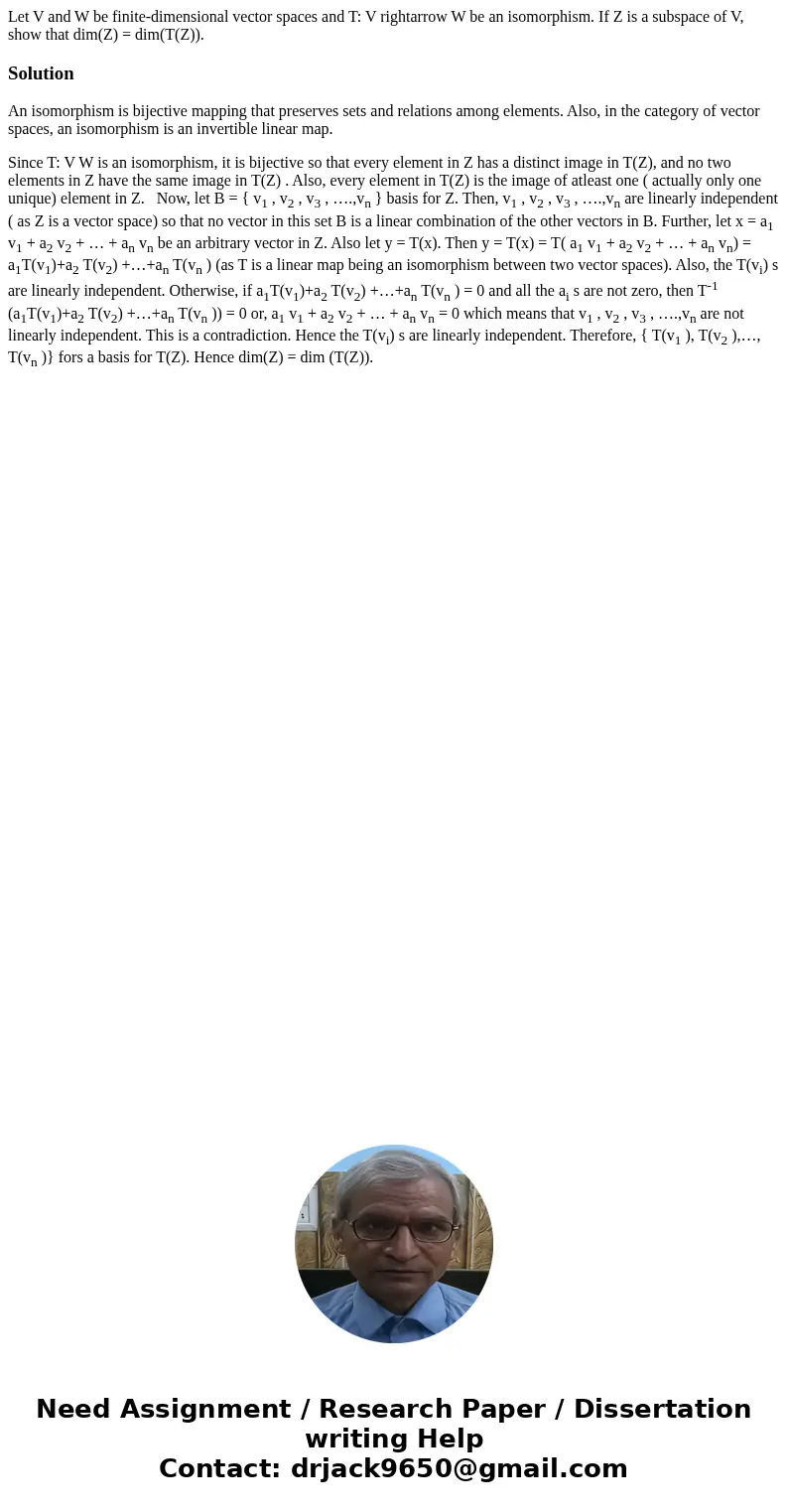Let V and W be finitedimensional vector spaces and T V right
Solution
An isomorphism is bijective mapping that preserves sets and relations among elements. Also, in the category of vector spaces, an isomorphism is an invertible linear map.
Since T: V W is an isomorphism, it is bijective so that every element in Z has a distinct image in T(Z), and no two elements in Z have the same image in T(Z) . Also, every element in T(Z) is the image of atleast one ( actually only one unique) element in Z. Now, let B = { v1 , v2 , v3 , ….,vn } basis for Z. Then, v1 , v2 , v3 , ….,vn are linearly independent ( as Z is a vector space) so that no vector in this set B is a linear combination of the other vectors in B. Further, let x = a1 v1 + a2 v2 + … + an vn be an arbitrary vector in Z. Also let y = T(x). Then y = T(x) = T( a1 v1 + a2 v2 + … + an vn) = a1T(v1)+a2 T(v2) +…+an T(vn ) (as T is a linear map being an isomorphism between two vector spaces). Also, the T(vi) s are linearly independent. Otherwise, if a1T(v1)+a2 T(v2) +…+an T(vn ) = 0 and all the ai s are not zero, then T-1 (a1T(v1)+a2 T(v2) +…+an T(vn )) = 0 or, a1 v1 + a2 v2 + … + an vn = 0 which means that v1 , v2 , v3 , ….,vn are not linearly independent. This is a contradiction. Hence the T(vi) s are linearly independent. Therefore, { T(v1 ), T(v2 ),…, T(vn )} fors a basis for T(Z). Hence dim(Z) = dim (T(Z)).

 Homework Sourse
Homework Sourse